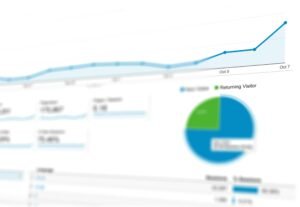Designing Landing Pages to Revolutionize SEO and Maximize Conversions
The evolving landscape of digital marketing highlights the importance of integrating effective SEO strategies and conversion-optimized landing pages. In a comprehensive guide recently featured on Search Engine Land, Marcus Miller emphasizes designing landing pages that not only drive traffic but also convert visitors into customers. His insights provide a roadmap for marketers looking to create impactful digital experiences.
The Strategic Approach to SEO-Focused Landing Pages
For businesses aiming to optimize their online footprint, constructing a landing page that effectively balances SEO and conversion is paramount. According to Marcus Miller, successful landing pages demand clear messaging and structured layouts that intuitively guide visitors to specific calls to action. This strategy is part of a larger marketing funnel designed to enhance lead generation while maintaining alignment with top-level marketing strategies.
Engagement metrics, such as the amount of time a user spends on a page and their click behavior, are increasingly crucial. Recent studies into Google’s algorithms suggest that pages with high user engagement might rank better. This approach insists on crafting user-centric pages that address the audience’s needs while facilitating smooth navigation towards conversion.
Crafting the Ideal Landing Page: Ten Essential Elements
Marcus Miller identifies ten core elements to create an optimized landing page:
1. **Clear Header Section** – A concise headline that succinctly states the value proposition, complemented by a strong call to action and engaging hero image.
2. **The Problem Section** – Outlining the problem customers face if they do not take action.
3. **The Solution Section** – Presenting how the product or service resolves the customer’s problem.
4. **Trust-Building Section** – Including testimonials and certifications to establish brand credibility.
5. **Three-Step Plan** – Providing a simple, transparent plan that shows how easy it is to engage with the business.
6. **Explanatory Section** – Offering detailed information about products or services, ensuring clarity and eliminating customer doubts.
7. **Optional Video** – Adding a video for visual engagement when applicable.
8. **Optional Pricing Information** – Offering clear and tiered pricing options, guiding value-based decisions.
9. **Final Call to Action** – Reinforcing the primary CTA to drive conversions.
10. **Additional Information Section** – Supplementary details that might inform or persuade potential customers.
Local Experts Weigh In
Local SEO expert Taylor Johnson from Austin, Texas, emphasizes the relevance of these practices, stressing their potential impact within the community. “For local businesses, incorporating optimized landing pages as part of the marketing arsenal can increase visibility and customer interaction, which can lead to higher conversion rates and community growth,” she states.
Similarly, Jane Doe, a digital strategist from Houston, highlights the importance of keeping user experience at the forefront. “Customers are more likely to engage with your content if it’s relevant, accessible, and easy to understand. UX is a critical component of any SEO strategy,” Doe comments.
Impact on the Community and Business Landscape
Local businesses across the United States, particularly those in competitive markets, are likely to benefit substantially from adopting these best practices. The push towards more strategic digital marketing efforts can lead to increased business viability and economic growth at the community level. Implementing such practices also aligns with broader patterns in digital consumption habits, which emphasize efficiency and engagement.
For instance, the recent focus on mobile-optimized and fast-loading pages reflects the ongoing shift towards mobile-first digital consumption. In local communities where internet access is prevalent, these optimizations ensure that businesses remain competitive and continue to capture a wider audience.
Comparisons with Previous Trends and Potential Future Implications
Over the years, SEO has seen several transformations, each reshaping how businesses approach digital marketing. While past trends focused heavily on keyword-based strategies, the current emphasis on user engagement and experience reflects a more holistic approach to attracting and retaining online customers. As businesses continue to adapt, it’s anticipated that future improvements in technology, particularly ai tools, will further streamline digital interactions.
Furthermore, as Marcus Miller hints at the use of engagement data from platforms like Google Chrome, businesses in tech-savvy communities may need to adapt strategies that enhance both user experience and engagement metrics.
Conclusion and Resources
For local businesses and digital marketers eager to implement these strategies, Search Engine Land offers a landing page optimization template that can be tailored to meet specific business needs. This resource simplifies the creation process by providing a foundational structure upon which businesses can build effective pages.
For further insight into designing high-impact landing pages, community members can access a wealth of information on platforms dedicated to tech news and SEO strategies. Engaging with local digital marketing workshops or webinars is also recommended, offering practical advice and hands-on learning experiences tailored to specific community needs.
Ultimately, designing efficient landing pages is a crucial step for businesses striving to capture the modern consumer’s attention in a competitive digital world, enhancing both their online presence and bottom line.




